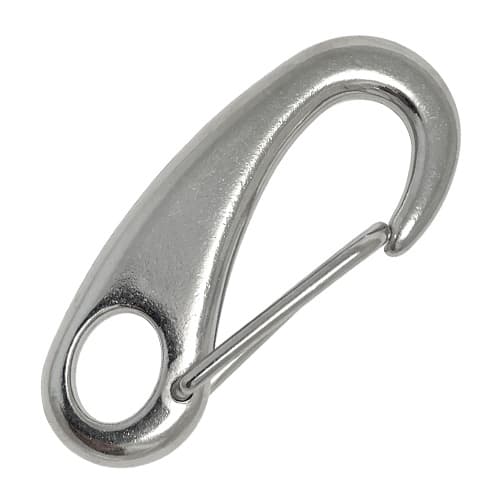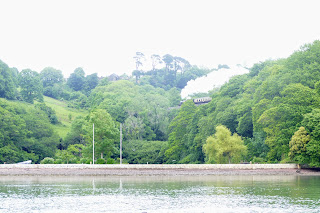As ever, we were late starting and guess what? It was on the nose!
I'd watched a series of forecasts over the preceding 10 days: Windguru, UK Met office, XCWeather. None agreed, all changed with regularity. What was common was the clear, dry weather would end the day of our departure. If only I could press a pause button when the forecast was favorable.
On the Friday evening before departure, I set off to Gratitude to load provisions and camping gear. The east wind blew so hard across the estuary, that I abandon the idea, fearing the lee-shore in a cheap dingy with only oars.
Friday night was curry night and a late one with my crew travelling from London and Blackburn. Several drinks later, the alarm was set for 5am it was off to bed.
For once we were at least at the boat early. After loading up, I followed my skipper's course instructions and actually did a briefing. The plan was to make a full day's pilotage south down the coast and then west. With a strong southerly, it was clear that this might not happen .
The first sign of trouble was a passing a small fishing boat returning to the river with the skipper shaking his head. Looking out to sea, we began to understand the problem. The swell from the previous day's easterly was now mixing with a southerly chop. Grey clouds and white caps made for an unappealing seascape. An attempt was made to cut out the long fairway, and nip through a gap in the sand bar and head south. No sooner than we set on a southeasterly beat, we could see something blocking our way. Our route was cut off by a huge floating dredge pipe that's working to pull in sand to fix
erosion on the Warren.
Attempts to sail south were further thwarted by the chop and strong winds. Rick was silent and we soon discovered he'd 're-enjoyed' his curry. We pushed past the dredge pipe and headed into the coast to gain what little shelter we could find. From Teignmouth the engine worked hard until we finally made shelter at Ansty's cove where we heated some food and considered the plans.
 |
| A nice curry, again. |
I was keen to make some distance, but felt that Torquay might be the only sensible option. After some warmth and with renewed energy we headed off around Hope's nose and into Torbay where conditions were a little better. The day began to take shape, at last.
With our early start we made Dartmouth despite the conditions. We had too much sail up coming in towards the river mouth at 10 kts. Finally we reached shelter and Rick (our new recruit) was rewarded with the Tolkienesque entrance to the river. We had time to kill before we could push up to Tuckenhay on the tide and so it was ice cream and pub time.
Dartmouth is a wonderful place, and the motor up river was beautiful. We had occasional glimpses of the sun, but with the evening drawing in, the wind chill dominated the journey.
As expected, the bank holiday and evening spring tide, filled the Tuckenhay pontoon with a crowd of boats up for the evening. We rafted up next to a bigger cat from Topsham and poured a gin and tonic to prove that we too had our luxuries, including ice!
By the time our pub supper was washed down with beer, the pontoon was clear and us sea gypsies could spread out once more. Pontoons are great for boats with tents.
The first day had been long. Water was everywhere and we'd lost electrical power. We sponged out, fixed camp and bedded down hoping for better weather to come.
The second morning's conditions were a secret. Hiding several miles inland, with no internet or phone signal and in the bottom of a wooded valley wasn't not an easy place to assess your sailing plan. We showered, made breakfast and we motored back down river checking the clouds for speed and direction. Soon enough the phone signal brought a weather update. A brisk easterly was forecast but nothing too bad. Downwind sailing is easy right?
On reaching the sea, we set a course for Start Point in a nice breeze and pleasant conditions. 'This is more like it', I was thinking. A little distance from the point we rounded with the last of the fair tide and into the slack water.
Start Point has a bit of a reputation and we were on a big spring tide, so timing was important.
By this time we had my home made spinnaker up and it was working well. We heading along the coast at increasing speeds. We had fun watching the GPS. The boys called out the numbers. "Ten knots... twelve! ". As the bucketfuls of cold, salty water were thrown in our faces, we watched the gap to the 40 footer ahead of us close. This should all be a signal? By now we'd passed Salcombe and were below the cliffs at
Bolt Head and Bolt Tail. The boat behind had dropped sails, and was gone, presumable into Salcombe.
"14knts .... ", shouted Rick as the water began slapping hard from underneath, dislodging the central platforms, requiring us to sit on them to keep them down. It was at that point I realised my error. Caught up in speed records and the prospect of overtaking a big boat, all sails blazing, I'd not read the signs. We should have reduced sail waaaa....yyy back! We headed down wind, dropped the spinnaker, reefed and hoisted the working jib: a good move.
We screamed along the coast, put in another reef, went just as fast and entered
Bigbury Bay. Heading up toward Burgh Island, put us on a reach. I had to keep baring away as we just went too fast and the leeward shroud looked like a loose halyard. Slowly things eased as we neared Bantham and the Island. There wasn't enough water in the river, so we retreated behind the island. A warm drink from the flask allowed an assessment of the conditions, which were clearly improving. We headed down the coast to Mothecombe beach, our intended first day destination.
Bumping onto the sandy beach with the rising tide, we felt it was important to fully enjoy the lovely weather with a beer. It was more a celebration of the dying wind. After watching goose pimpled swimmers and chatting to interested boaties on the beach, we debated the wild camping option for the night, but as the surf turned us side onto the beach, we started the engine and headed for the comforts of the nearby
river Yealm.
The wind was now a sensible force 3, and it was a downwind sail to the Yealm and Noss Mayo. Pulling up to the visitor's pontoon for the second time in a month (the first time on a 30ft Bavaria during my Day Skipper practical) it seemed that, once again, Noss Mayo was the limit of my cruising on Gratitude as the next day we'd be turning around and making our way home. We pitched the tent, chatted with the other boats and ate our supper. I was a bit put out by one woman who asked "are you on an expedition?". Hardly, I thought as we pumped up the dinghy and made for the pub.


The next morning I peered out into the mist and promptly went back to sleep. Perhaps we were on an expedition, we'd certainly had every type of weather. Breakfast was prepared in anticipation of another day's adventure as we chatted to the harbour master about the fog he'd seen on his early morning run out the the river mouth. A quick shower and with all the safety gear I could muster, we were into the bay. It was calm, the sun was trying to come through as the fog rose and fell. A fog horn could be heard some way off, and it was getting closer. But, we're not that far out into the bay right?
That's close enough, thank you.
We passed a few yachts as the conditions improved. My new pilot plan for the day was relaxed. We'd follow the now westerly wind back to Salcombe for the final night. Event free sailing it was. A good lunch on deck as we sailed along in the thin, lifting, fog and faint sunshine.
Salcombe looked delightful and the harbour master gave us a warm welcome and options for the night. We elected for the pontoon, hoping to spread once again. We rafted on the busy pontoon and celebrated with excellent rum and ginger. Sadly, the ice was now gone.
The water taxi scooped us up from the end of the pontoon and into town, stopping off to collect crews from boats very different to ours. People emerged from cockpits dressed in what you might call après-sail attire. We asked the time of the last taxi and disappeared into the town for a good restaurant meal.
Returning to the harbour office, I asked for the last taxi to the visitors pontoon and was met with the tone of a man ready for bed. Others joined the taxi and we sped up and down between moorings. The driver gave some a hard time when they couldn't pick their (large) boats out amongst the many other large boats. We were last and wondered what whip of the tongue we'd be dealt. "Now I'll drop off the real sailors", he said!
The next morning was the last. It was a late night and an early start to get to Start Point with the fair tide. We packed quickly and got away early as Peter had decided against the tent and braved a shower or two on deck with a tarpaulin for back up.
We sailed at a leisurely 3 to 4 knots toward Start Point, measuring our speed against other boats. We tried various sail arrangements and angles and enjoyed the best of the weather so far. Start Point delivered a few long standing waves and some great wildlife.
As we made our way east the wind increased and we even prepared for a squall that never came. (So I am learning). As we made our way north we were reaching and covered the ground at speeds between 4 and 9 knots. It wasn't long before we swept across Torbay and around into Ansty's cove for a last lunch. Again we headed north reaching at speed and made Exmouth in time for the full ebb to exercise the outboard one last time.
What a great boat a Tiki 21 is. What other 21ft boat has space for three blokes and can carry a pace. As they say "the smaller the boat the bigger the adventure".


































































